#lagenorhynchus
Text

White-beaked dolphin (Lagenorhynchus albirostris)
My friends! Behold! A new friend!!! After more than a year (no joke) without a proper commission, I had a lovely new project to work on these past weeks.
It's for Mindfully Wired Communications, a company in the UK that translates scientific information to the general public through all sorts of means. They're currently collaborating on a project to reduce bycatch in UK fisheries, and part of that is creating an ID guide for the fishermen of animals they might encounter at sea. Really important work which I'm happy to contribute to.
Most of the illustrations they needed I already had lying around. But a few had to be made anew, one of which this handsome fellow, the White-beaked dolphin! Markings wise, they are one of my favourite species of dolphin. I love the way everything on their body just flows. Also they have great whopping dorsal- and pectoral fins, and, irony of ironies, often black-marked beaks as adults.
For some reason it was quite a struggle to make him look right, but in the end I'm happy with the result. I hope you like it too, and the other friends will follow soon!
#illustrations#scientific illustration#White-beaked dolphin#dolphin#Lagenorhynchus albirostris#Lagenorhynchus#toothed whale#cetacean
54 notes
·
View notes
Text

Fitzroy's dusky dolphin "Lagenorhynchus" obscurus fitzroyi
Observed by whale_nerd, CC BY-NC
#Lagenorhynchus obscurus fitzroyi#Fitzroy's dusky dolphin#Cetacea#Delphinidae#cetacean#dolphin#South America#Argentina#Atlantic Ocean
38 notes
·
View notes
Photo

Dusky dolphins (Lagenorhynchus obscurus) playing off the coast of Kaikoura, New Zealand
Michael S. Fuhrer (Feather as a Light)
196 notes
·
View notes
Note
🥚?
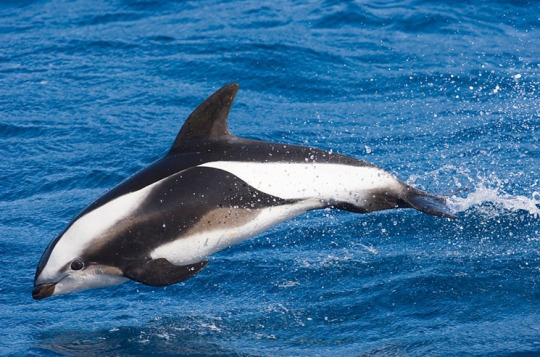
hourglass dolphin!
(Lagenorhynchus cruciger)
41 notes
·
View notes
Photo

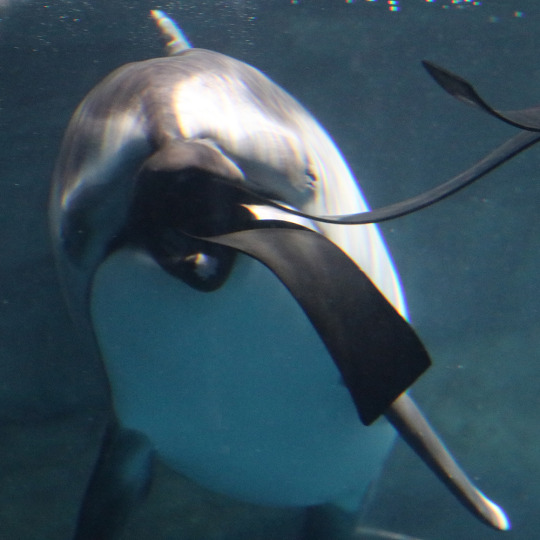
なんかゴムをおいしそうにしゃぶり続けていた
昆布みたいでおいしかったのかもしれん…
@海遊館
5 notes
·
View notes
Text

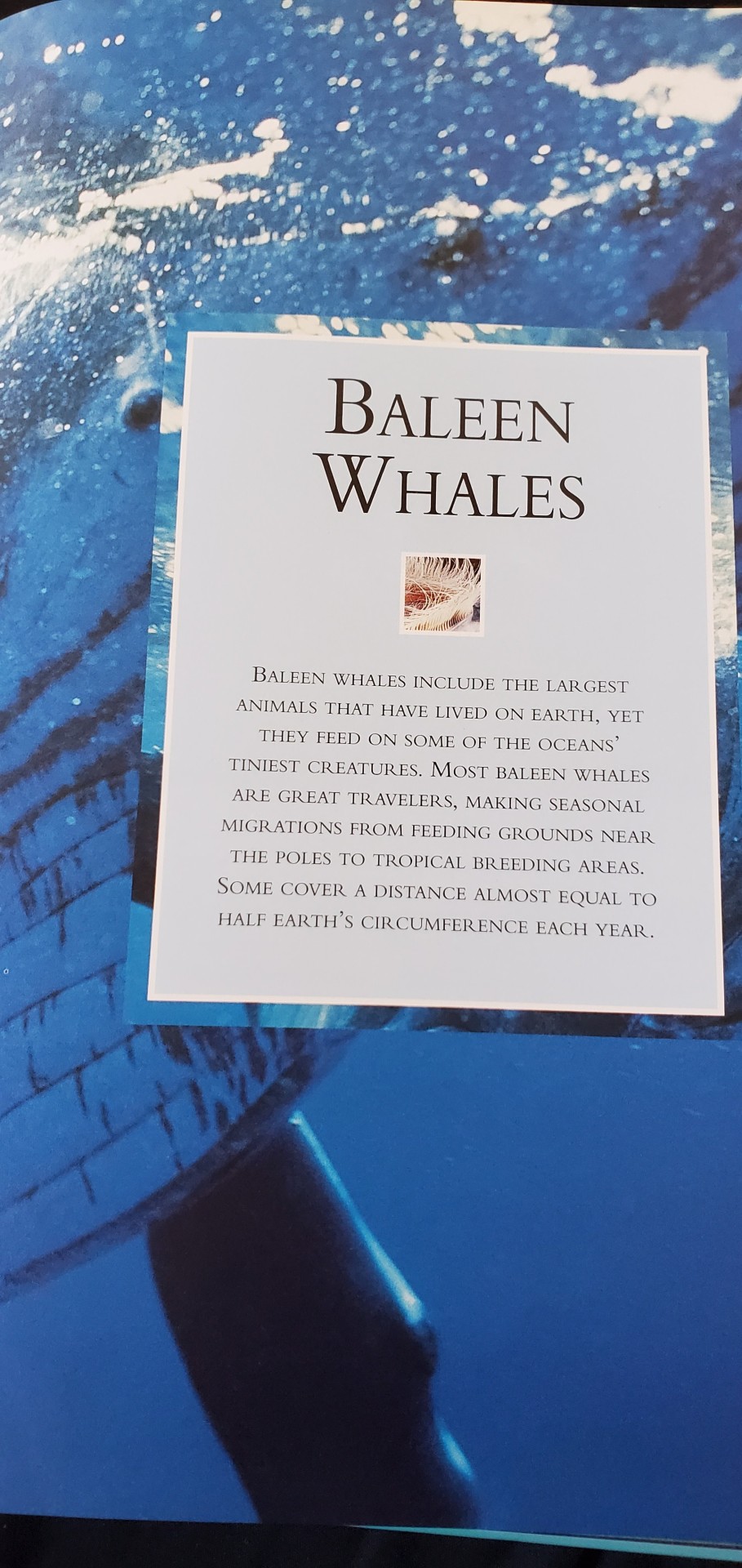
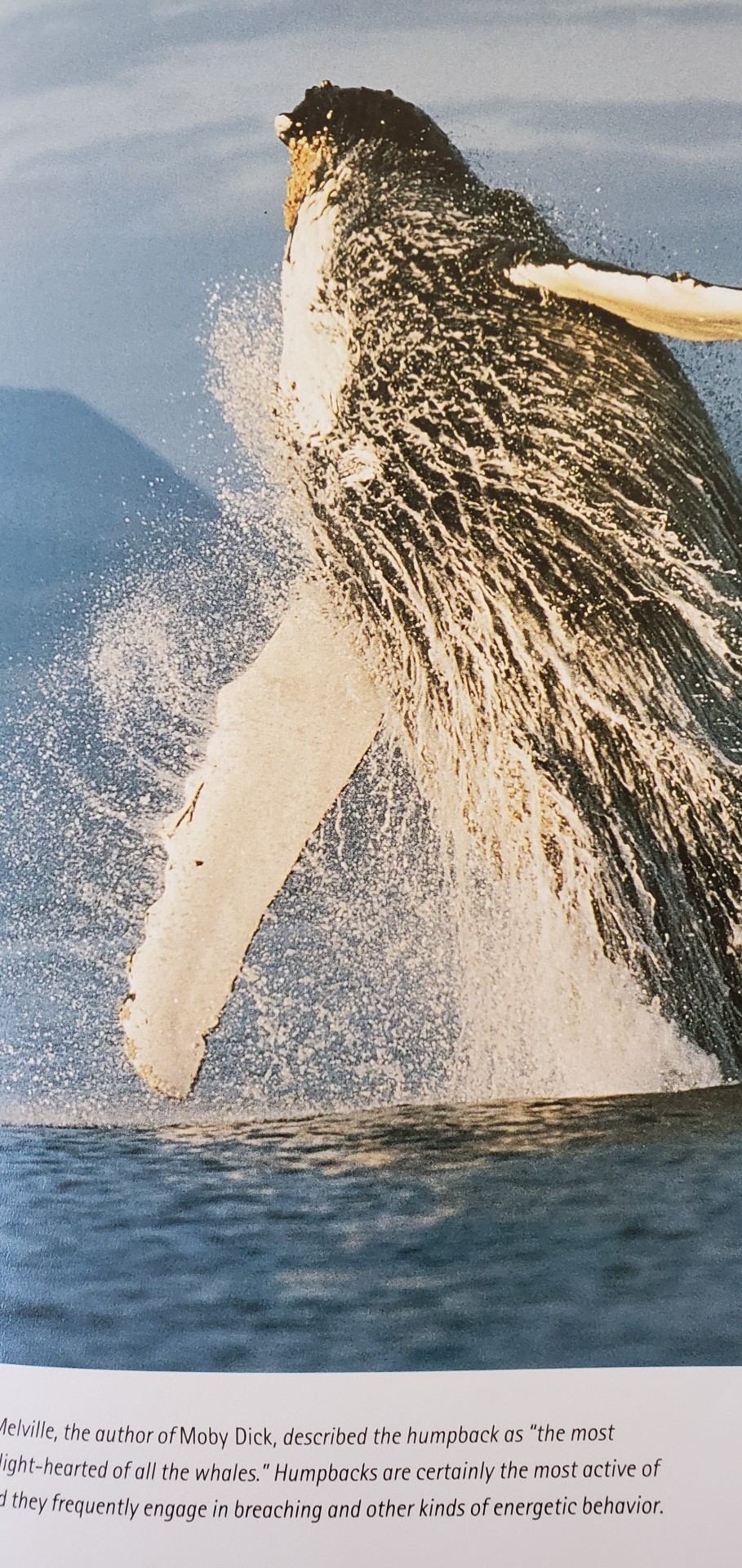

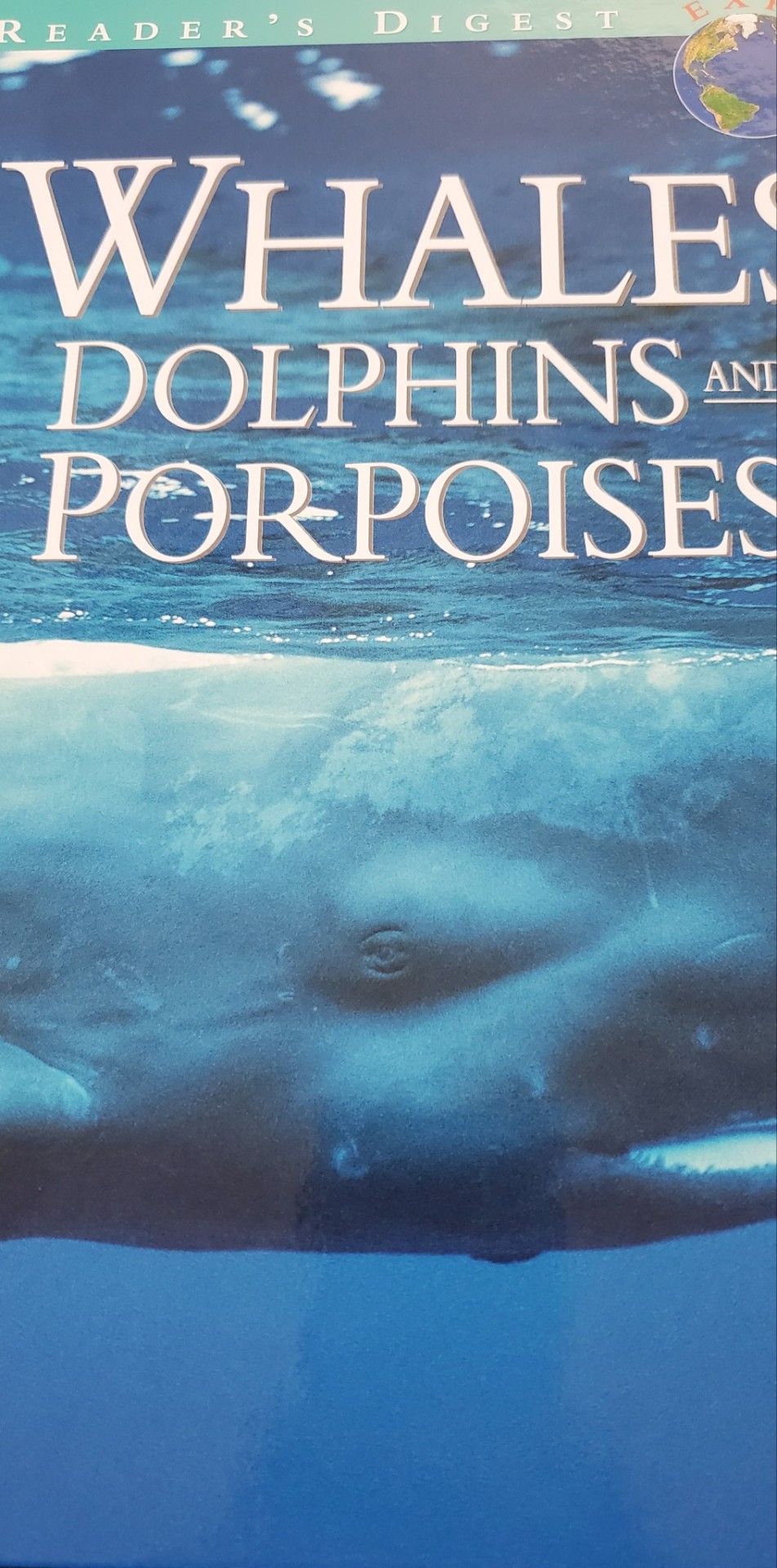




My whale book arrived!!! 🐋🌊🐬💙
#i'm so happy!!#im thirty pages in!!#narwhals#monodon monoceros#humpback whales#megaptera novaeangliae#pantropical spotted dolphins#stenella attenuata#pacific white sided dolphin#lagenorhynchus obliquidens#sperm whales#physeter macrocephalus#balaenopteridae#monodontidae#physeteridae#delphinidae#cetaceans#whales#🐋
5 notes
·
View notes
Text

Pacific White Sided Dolphin (Lagenorhynchus obliquidens)
taken in the Pacific Ocean somewhere off the coast of California
status: least concern
They are sometimes called the hooked fin porpoise, its easy to see why on this particular individual with a significant hook to its dorsal fin! There were several in this speedy group with fins hooked to this degree but this was the only one that wanted (sort of) to star in a photo.
#Pacific White Sided Dolphin#Dolphin#toothed whale#Lagenorhynchus obliquidens#cetacean#ocean#wild earth#wild ocean#wildlife#pacific ocean#photo#photography#canon#canon 6d mark ii
3 notes
·
View notes
Text
Dolphins and whales use sound to communicate, navigate and hunt. New research suggests that the collections of fatty tissue that enable toothed whales to do so may have evolved from their skull muscles and bone marrow.
Scientists at Hokkaido University determined DNA sequences of genes which were expressed in acoustic fat bodies—collections of fat around the head that toothed whales use for echolocation. They measured gene expression in the harbor porpoise (Phocoena phocoena) and Pacific white-sided dolphin (Lagenorhynchus obliquidens). Their findings were published in the journal Gene.
Continue Reading.
170 notes
·
View notes
Text
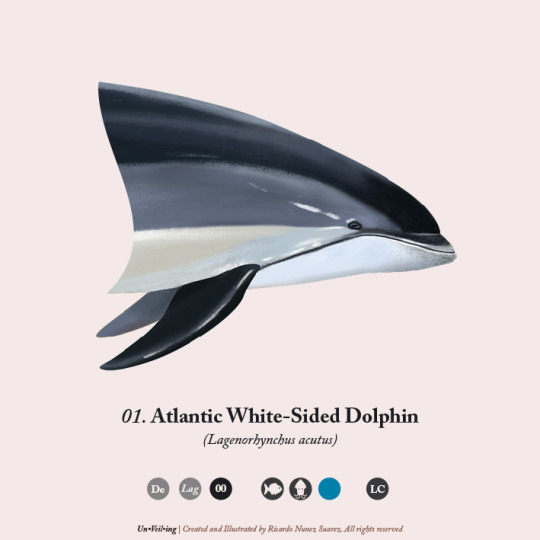
Atlantic White-Sided Dolphin.
(Lagenorhynchus acutus)
Least Concern.
As always, I have enjoyed working with this family. Working with cetaceans is always enjoyable. The most amusing aspect is getting to know them. I must confess that my knowledge about cetaceans was quite limited, extending only to the commonly known dolphins and whales. However, compiling this information has opened my eyes, allowing me to marvel at the hidden wonders of the sea and emphasizing the importance of protecting it.
_____________________
Thank you all for your support. If you want to know more about mammals consider joining my club. I post more animals there than the ones I post here, showing the full-body illustration of each animal, explaining the infographic and the illustration process, and how the family is being completed, apart from many other nice stuff. Here is the link: CLUB
Another way of supporting me is spreading the word. A like, a follow, or a reblog are very much appreciated. See you next week and thank you.
#illustration#dolphins#atlantic white side dolphin#scientific illustration#cetaceos#cetaceans#delfin#drawing#wild animals#wildlife#artist on tumblr#animals#mammals#marine life
20 notes
·
View notes
Text
Animal of the Day!
Pacific White-Sided Dolphin (Lagenorhynchus obliquidens)
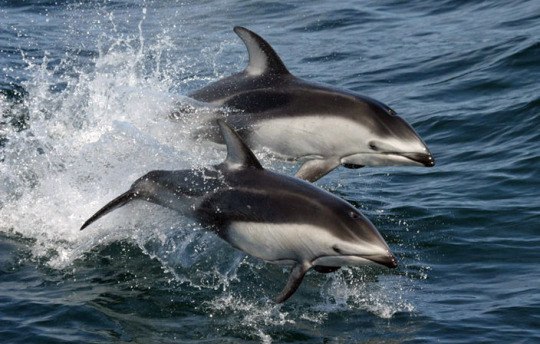
(Photo from NOAA)
Conservation Status- Least Concern
Habitat- Northern Pacific Ocean
Size (Weight/Length)- 104 kg; 2 m
Diet- Squid; Fish
Cool Facts- Despite the Pacific white-sided dolphin’s small size, they are considered one of the more playful dolphin species. Pods of up to 100 members create close bonds with each other, helping to care for the sick and even helping younger dolphins swim to the surface to breathe. Constantly rubbing against each other and touching flippers maintains lifelong friendships. Relatively friendly towards humans, Pacific white-sided dolphins will catch a ride on a boat’s wake and trail after small fishing vessels to pick off fish that escape from nets.
Rating- 11/10 (Somersault champions.)
#Animals of the day#Animals#Mammals#Dolphins#Marine animals#Sunday#December 4#Pacific white-sided dolphin#biology#science#conservation#the more you know
153 notes
·
View notes
Text

Grzimek's Animal Life Encyclopedia, vol. 11, Mammals II. 1972. Illustrated by Peter Barrett.
Beaked whales;
1.) Baird's beaked whale (Berardius bairdii)
2.) Strap-toothed whale (Mesoplodon layardii)
3.) True's beaked whale (Mesoplodon mirus)
4.) Sowerby's beaked whale (Mesoplodon bidens)
5.) Northern bottlenose whale (Hyperoodon ampullatus)
White whales and narwhals;
6.) Beluga whale (Delphinapterus leucas)
7.) Narwhal (Monodon monoceros)
Long snouted dolphins;
8.) Rough-toothed dolphin (Steno bredanensis)
9.) Atlantic humpback dolphin (Sousa teuszii)
True dolphins;
10.) Indo-Pacific bottlenose dolphin (Tursiops aduncus)
11.) Common dolphin (Delphinus delphis)
12.) Striped dolphin (Stenella coeruleoalba)
13.) Atlantic white-sided dolphin (Lagenorhynchus acutus)
14.) Common bottlenose dolphin (Tursiops truncatus)
15.) Risso's dolphin (Grampus griseus)
16.) Northern right whale dolphin (Lissodelphis borealis)
Pilot and killer whales;
17.) Long-finned pilot whale (Globicephala melas)
18.) Pygmy killer whale (Feresa attenuata)
19.) Irrawaddy dolphin (Orcaella brevirostris)
20.) Orca (Orcinus orca)
21.) False killer whale (Pseudorca crassidens)
Commerson's dolphins;
22.) Commerson's dolphin (Cephalorhynchus commersonii)
Porpoises;
23.) Harbour porpoise (Phocoena phocoena)
24.) Spectacled porpoise (Phocoena dioptrica)
25.) Dall's porpoise (Phocoenoides dalli)
26.) Indo-Pacific finless porpoise (Neophocaena phocaenoides)
#cetaceans#beaked whales#baird's beaked whales#strap-toothed whales#true's beaked whales#sowerby's beaked whales#northern bottlenose whales#belugas#narwhals#dolphins#rough-toothed dolphins#atlantic humpback dolphins#indo-pacific bottlenose dolphins#common dolphins#striped dolphins#atlantic white-sided dolphins#common bottlenose dolphins#risso's dolphins#northern right whale dolphins#pilot whales#long-finned pilot whales#pygmy killer whales#irrawaddy dolphins#orcas#false killer whales#commerson's dolphins#porpoises#harbour porpoises#spectacled porpoises#dall's porpoises
267 notes
·
View notes
Text

White-beaked dolphin Lagenorhynchus albirostris
Observed by fratercula640, CC BY-NC
#Lagenorhynchus albirostris#white-beaked dolphin#Cetacea#Delphinidae#cetacean#dolphin#Europe#Iceland#Atlantic Ocean#Faxaflói
23 notes
·
View notes
Text
Thirteen species of extant odontocete evolved narrow-band high-frequency (NBHF) echolocation in four separate, convergent events. These species include the families Kogiidae (pygmy sperm whales) and Phocoenidae (porpoises), as well as some species of the genus Lagenorhynchus, all of Cephalorhynchus, and the La Plata dolphin. NBHF is thought to have evolved as a means of predator evasion; NBHF-producing species are small relative to other odontocetes, making them viable prey to large species such as the orca. However, because three of the groups developed NBHF prior to the emergence of the orca, predation by other, ancient, raptorial odontocetes must have been the driving force for the development of NBHF, not predation by the orca. Orcas, and, presumably, ancient, raptorial odontocetes such as Acrophyseter, are unable to hear frequencies above 100 kHz.[83]
this is fucked. four times??? i guess water is good for echolocation, higher transmission, but like. what the fuck. fish dont echolocate. what is going on here
Toothed whales emit a focused beam of high-frequency clicks in the direction that their head is pointing. Sounds are generated by passing air from the bony nares through the phonic lips. These sounds are reflected by the dense concave bone of the cranium and an air sac at its base. The focused beam is modulated by a large fatty organ known as the 'melon'. This acts like an acoustic lens because it is composed of lipids of differing densities.
It has been suggested that some smaller toothed whales may have their tooth arrangement suited to aid in echolocation. The placement of teeth in the jaw of a bottlenose dolphin, for example, are not symmetrical when seen from a vertical plane, and this asymmetry could possibly be an aid in the dolphin sensing if echoes from its biosonar are coming from one side or the other.[86][87] However, this idea lacks experimental support.
Echoes are received using complex fatty structures around the lower jaw as the primary reception path, from where they are transmitted to the middle ear via a continuous fat body. Lateral sound may be received through fatty lobes surrounding the ears with a similar density to water. Some researchers believe that when they approach the object of interest, they protect themselves against the louder echo by quietening the emitted sound. In bats this is known to happen, but here the hearing sensitivity is also reduced close to a target.[88][89]

theyre like goddamn bio-robots! a fat based sound lens! a fat-based sound channel! reflective bone and air sacs! its incredible! bats wish they had a structure this elaborate!
18 notes
·
View notes
Text
Peale's Dolphin Classification
Kingdom = Animalia
Phylum = Chordata
Class = Mammalia
Order = Artiodactyla
Infraorder = Cetacea
Family = Delphinidae
Genus = Lagenorhynchus
Species = L. australis
.
Patreon
#studyblr#notes#biology#bio#bio notes#biology notes#marine science#marine biology#marine science notes#marine sci notes#marine biology notes#marine bio#marine bio notes#science#life science#animals#animal science#chordates#dolphins#taxonomy#classification#life classification
4 notes
·
View notes
Text
Happy world whale day 🐋🐬🐳💙
#sorry minke whales. you lost to gray whales bc theyre on money in mexico :]#baleen whales#toothed whales#odontoceti#mysticeti#cetaceans#whales#🐋
43 notes
·
View notes
Text

Pacific White Sided Dolphin (Lagenorhynchus obliquidens)
taken in the Pacific Ocean somewhere off the coast of California
status: least concern
The only photo I managed of a face and just look how cute it is! Their coloration already makes them easy to differentiate from the common and bottlenose dolphins we often see but the shape of their face helps to further enforce that.
#Pacific White Sided Dolphin#Lagenorhynchus obliquidens#dolphin#cetacean#animal#wildlife#wild animal#pacific ocean#ocean#photo#photography#canon#canon 6d mark ii
1 note
·
View note